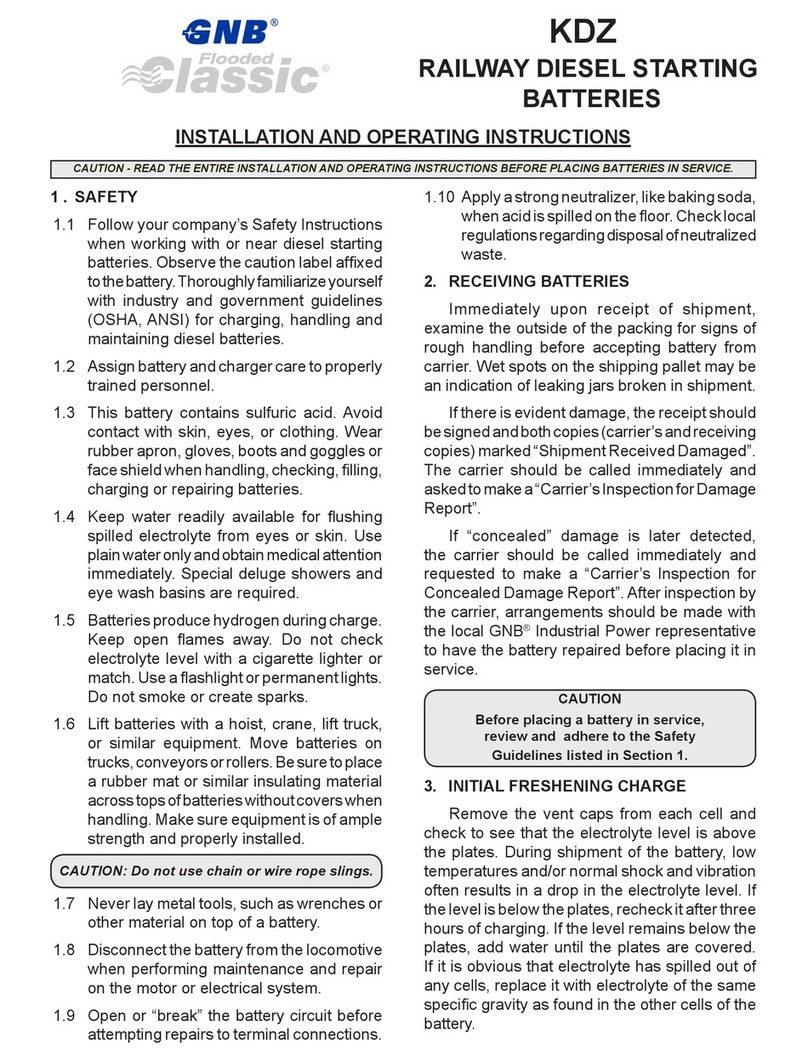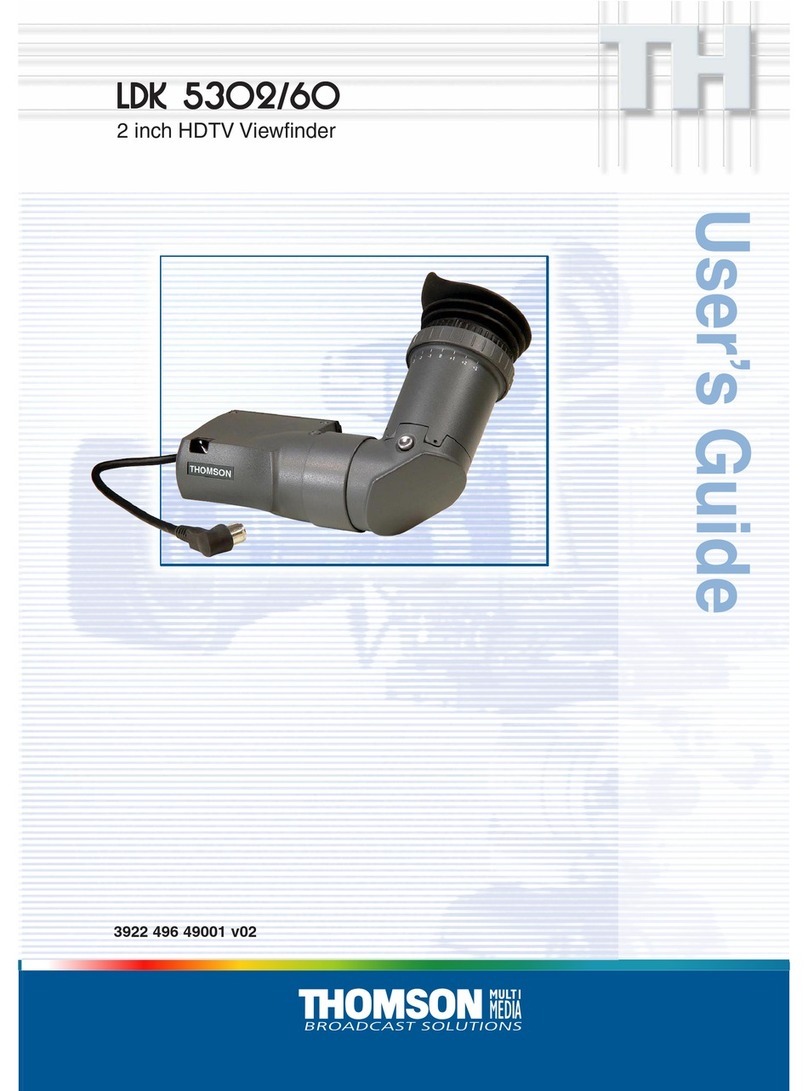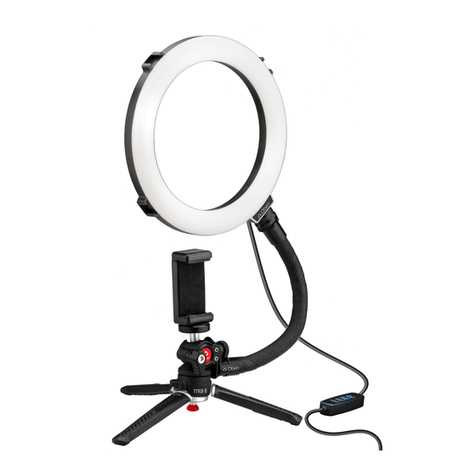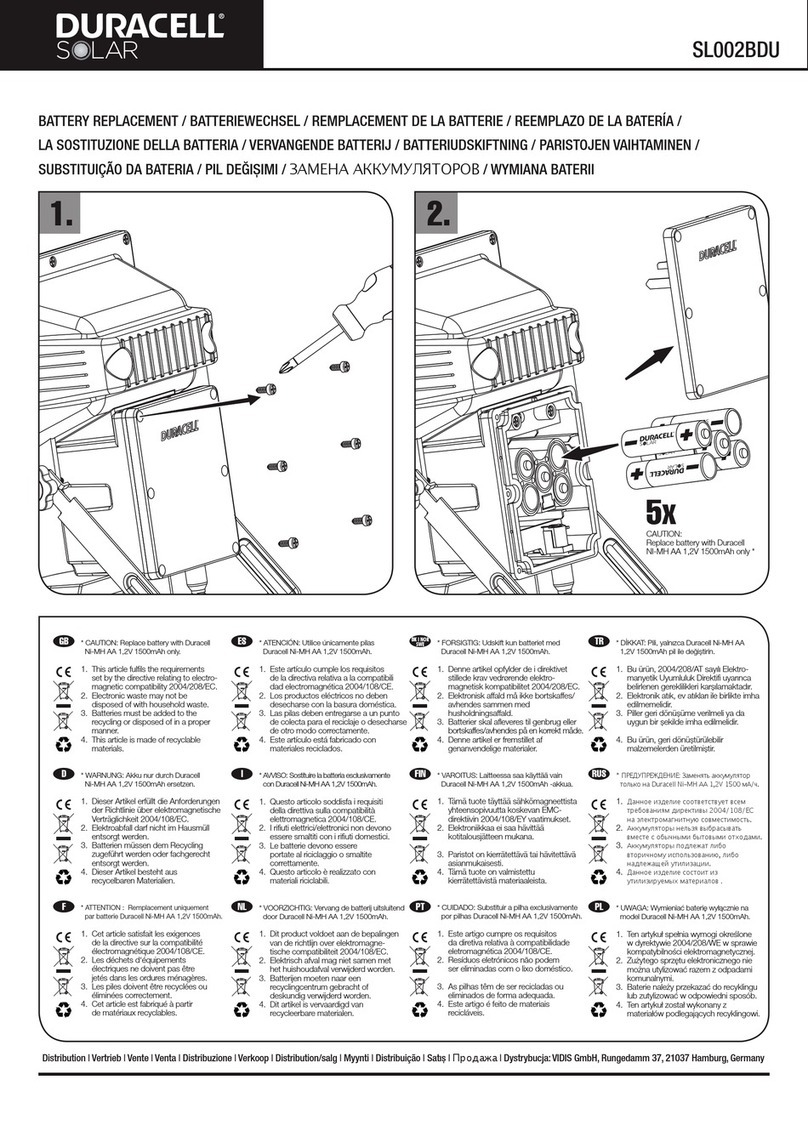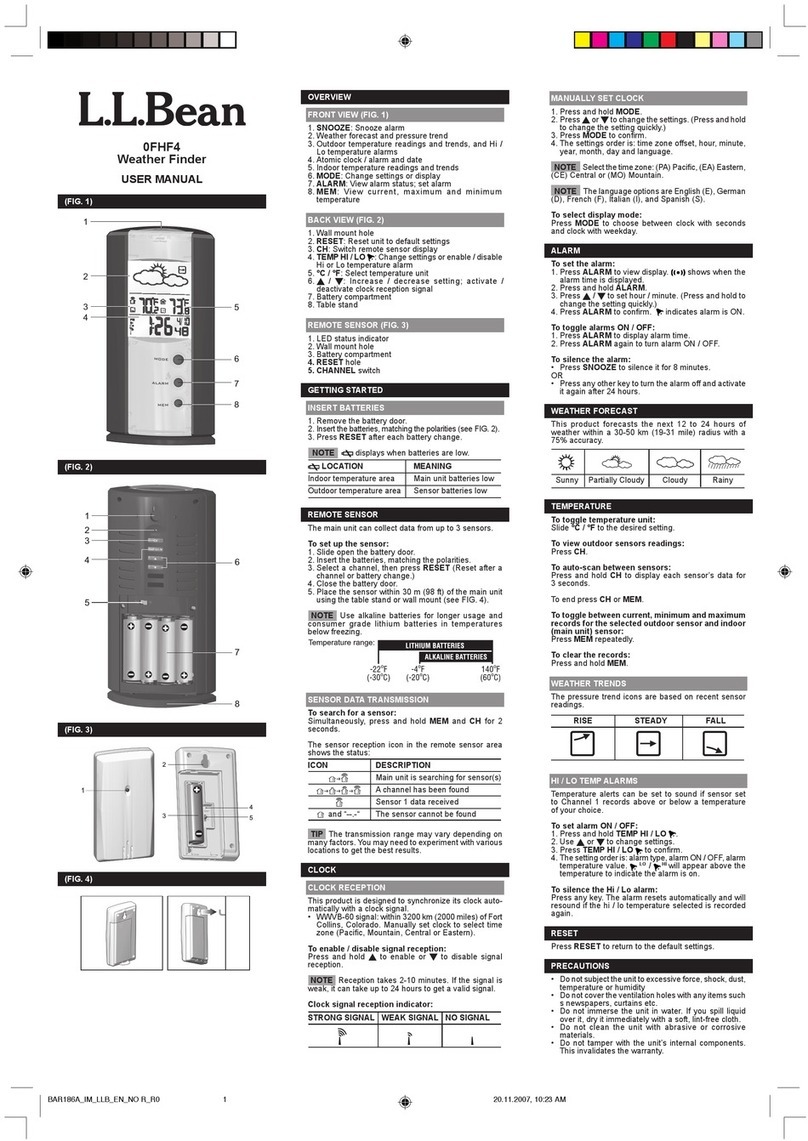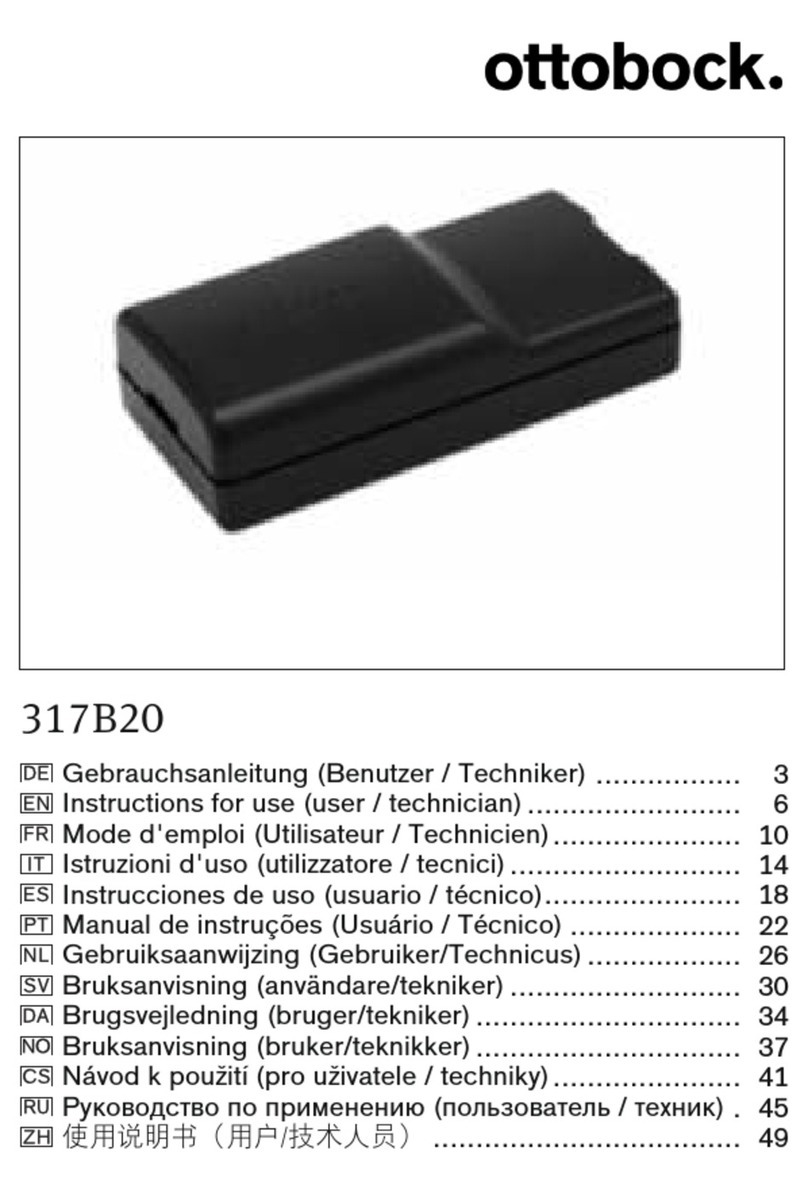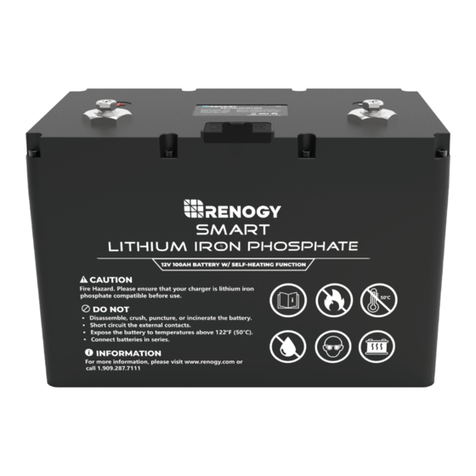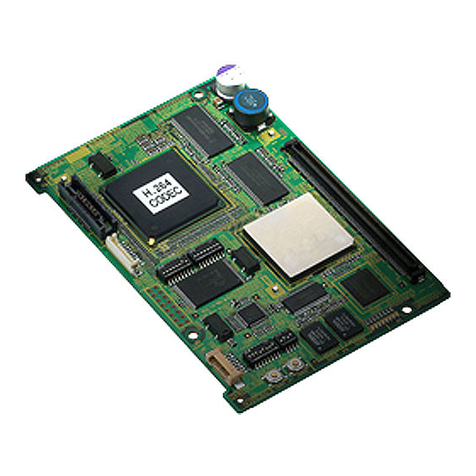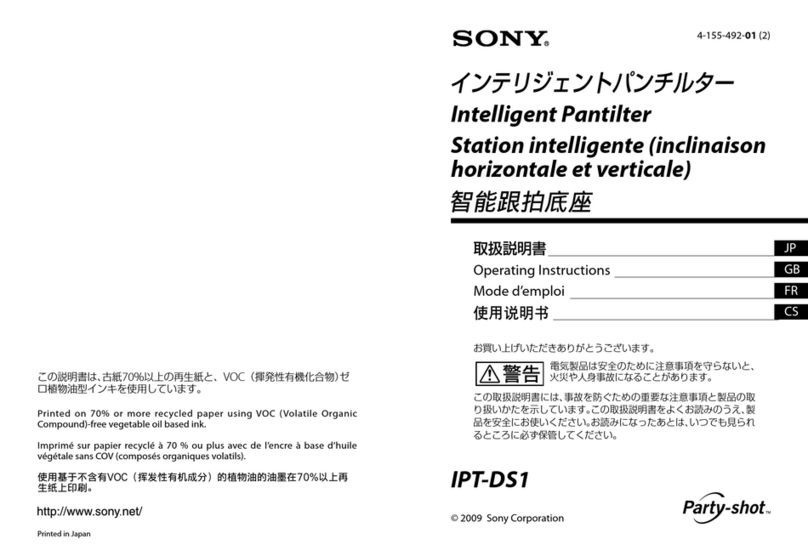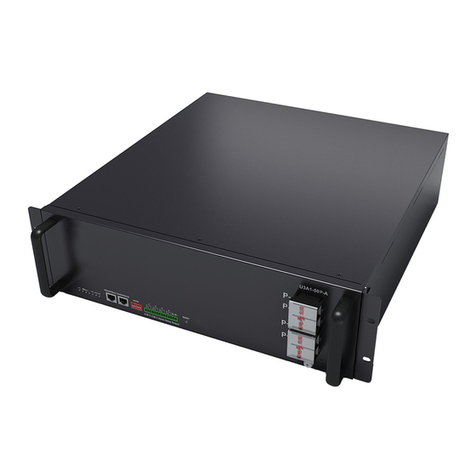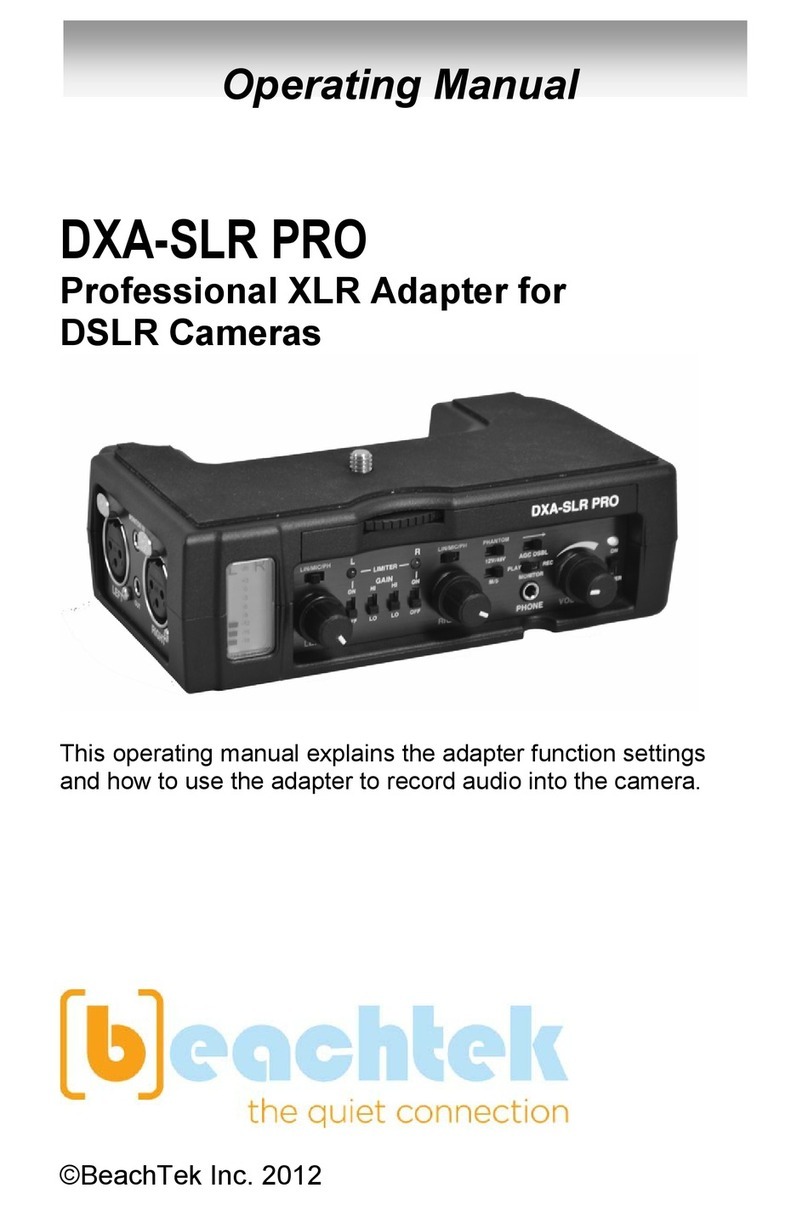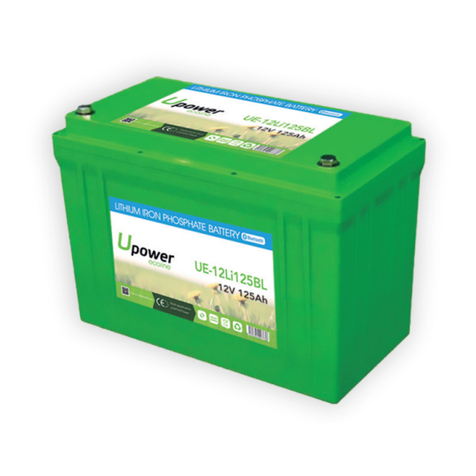GNB Absolyte GX Series User manual

TAB E OF CONTENTS
SE TION 1: GENERAL ...................................................................................................................................6
SE TION 2: SAFETY MESSAGES .................................................................................................................6
2.0 Sulfuric Acid Electrolyte Burns ....................................................................................................6
2.1 Explosive Gases..........................................................................................................................6
2.2 Electrical Shock and Burns .........................................................................................................6
2.2.1 Static Discharge Precautions for Batteries..................................................................................6
2.3 Safety Alert ..................................................................................................................................6
2.4 Important Message......................................................................................................................6
SE TION 3: DELIVERY INFORMATION .........................................................................................................6
3.0 Receipt of Shipment ....................................................................................................................6
3.1 oncealed Damage.....................................................................................................................7
SE TION 4: STORAGE INFORMATION .........................................................................................................7
4.0 Storage Prior to Installation .........................................................................................................7
4.1 Storage Location .........................................................................................................................7
4.2 Storage Interval ...........................................................................................................................7
SE TION 5: INSTALLATION ONSIDERATIONS...........................................................................................7
5.0 General........................................................................................................................................7
5.1 Space onsiderations .................................................................................................................7
5.2 Battery Location & Ambient Temperature Requirements ............................................................7
5.3 Temperature Variations................................................................................................................9
5.4 Ventilation ....................................................................................................................................9
5.5 Floor Loading...............................................................................................................................9
5.6 Floor Anchoring ...........................................................................................................................9
5.7 onnecting ables: Battery System to Operating Equipment ....................................................9
5.7.1 Paralleling ....................................................................................................................................9
5.8 Stacking Limitations.....................................................................................................................9
5.9 Terminal Plates............................................................................................................................9
5.10 Grounding....................................................................................................................................9
SE TION 6: UNPA KING..............................................................................................................................10
6.0 General......................................................................................................................................10
6.1 Accessories ...............................................................................................................................10
6.2 Recommended Installation Equipment and Supplies................................................................10
6.3 Unpacking..................................................................................................................................10
6.4 Handling of Modules..................................................................................................................10

SE TION 7: SYSTEM ARRANGEMENTS ....................................................................................................11
7.0 Module Arrangements ...............................................................................................................11
SE TION 8: SYSTEM ASSEMBLY................................................................................................................11
8.0 Module Assembly Identification .................................................................................................11
8.1 Bottom Supports (I-beams) .......................................................................................................11
8.2 Handling of Modules..................................................................................................................12
8.3 Tip Over Procedure ...................................................................................................................12
8.4 Horizontal-Multiple Stacks .........................................................................................................13
8.4.1 Stacking Base Modules .............................................................................................................13
8.4.2 Stack Tie Plates.........................................................................................................................13
8.4.3 Horizontal Stacking....................................................................................................................14
SE TION 9: ELE TRI AL ONNE TIONS.................................................................................................14
9.0 Post Preparation ........................................................................................................................14
9.1 onnections - System Terminals ...............................................................................................14
9.2 onnections - InterMODULE.....................................................................................................14
9.3 onnections - InterSTA K.........................................................................................................14
9.4 Torquing.....................................................................................................................................14
9.5 onnections - heck .................................................................................................................14
9.6 onnection Resistance..............................................................................................................15
SE TION 10: IDENTIFI ATION LABELS........................................................................................................15
10.0 Surfaces.....................................................................................................................................15
10.1 ell Numerals ............................................................................................................................15
10.2 System Polarity Labels ..............................................................................................................15
10.3 Warning Label ...........................................................................................................................15
10.4 Battery Nameplate.....................................................................................................................15
SE TION 11: PROTE TIVE MODULE OVERS ...........................................................................................15
11.0 General......................................................................................................................................15
11.1 Module lear over Installation ................................................................................................15
SE TION 12: BATTERY HARGING ..............................................................................................................15
12.0 Initial harge .............................................................................................................................15
12.1 onstant Voltage Method ..........................................................................................................15

SE TION 13: BATTERY OPERATION.............................................................................................................17
13.0 ycle Method of Operation........................................................................................................17
13.1 Floating harge Method............................................................................................................17
13.2 Float harge - Float Voltages....................................................................................................17
13.3 Recharge ...................................................................................................................................19
13.4 Determining State-of- harge ....................................................................................................19
13.5 Effects of Float Voltage..............................................................................................................19
13.6 Float urrent and Thermal Management ..................................................................................19
13.7 A Ripple ..................................................................................................................................19
13.8 Ohmic Measurements ...............................................................................................................19
SE TION 14: EQUALIZING HARGE.............................................................................................................20
14.0 General......................................................................................................................................20
14.1 Equalizing Frequency ................................................................................................................20
14.2 Equalizing harge Method ........................................................................................................20
SE TION 15: RE ORDKEEPING ...................................................................................................................21
15.0 Pilot ell ....................................................................................................................................21
15.1 Voltmeter alibration .................................................................................................................21
15.2 Records .....................................................................................................................................21
SE TION 16: TAP ONNE TIONS ................................................................................................................21
16.0 Tap onnections........................................................................................................................21
SE TION 17: TEMPORARY NON-USE ..........................................................................................................21
17.0 Temporary Non-Use ..................................................................................................................21
SE TION 18: UNIT LEANING.......................................................................................................................21
18.0 Unit leaning .............................................................................................................................21
SE TION 19 ONNE TIONS MAINTENAN E.............................................................................................21
19.0 onnections...............................................................................................................................21
SE TION 20 APA ITY TESTING.................................................................................................................22
20.0 apacity Testing ........................................................................................................................22

IST OF I USTRATIONS
PAGE FIGURE DESCRIPTION
8 Fig. 1 Typical System Spacing
10 Fig. 2 Packaged Modules
10 Fig. 3 Unpacking Modules
10 Fig. 4 Handling - Lifting Strap Placement
11 Fig. 5 Handling - Module
11 Fig. 6 Typical System Arrangements
11 Fig. 7 I-Beam Hardware Installation
11 Fig. 8 I-Beam Support Installed
12 Fig. 9 Tip-Over Procedure - Shackle-Strap Usage
12 Fig. 10 Tip-Over Procedure - Photo
12 Fig. 11 Module After Tip-Over
12 Fig. 12 Horizontal Stacking - Shackle-Strap Usage
13 Fig. 13 Handling and Stacking Horizontal Modules
13 Fig. 14 Hardware Installation Sequence
13 Fig. 15 Installing Hardware
13 Fig. 16 ompleted Horizontal Stack
13 Fig. 17 Positioning Horizontal Base Modules
13 Fig. 18 Tie Plate Assemblies
14 Fig. 19 Stack onnections
16 Fig. 20 Terminal Plate Kit Materials & Assembly
18 Fig. 21 Module lear over Materials & Assembly
24 Fig. 22 Sample Record Form
IST OF TAB ES
PAGE TAB E DESCRIPTION
7A Temperature Effects on Life
9B Absolyte GX Stacking Limitations
17 Equalize harge Voltages
19 D Float Voltage Effects on Life
20 E Equalize harge Voltages
APPENDICES
PAGE APPENDIX DESCRIPTION
25 A Temperature orrected Float Voltages
26 B Maximum Storage Interval Between Freshening harges
Versus Average Storage Temperature
27 Bonding and Grounding of Battery Rack

SECTION 1: GENERA
1.0 General Information
SECTION 2: SAFETY MESSAGES
2.0 Sulfuric Acid Electrolyte Burns
"Warning: Risk of fire, explosion or burns. Do not disassemble,
heat above 50° or incinerate." Batteries contain dilute (1.295
nominal specific gravity) sulfuric acid electrolyte which can
cause burns and other serious injury. In the event of contact
with electrolyte, flush immediately and thoroughly with
water. Secure medical attention immediately.
When working with batteries, wear rubber apron and rubber
gloves. Wear safety goggles or other eye protection. These will
help prevent injury if contact is made with the electrolyte.
2.1 Explosive Gases
Hydrogen gas formation is an inherent feature of all lead acid
batteries. Absolyte GX VRLA batteries, however, significantly
reduce hydrogen formation. Tests have shown that 99% or more
of generated gases are recombined within the cell under normal
operating conditions. Under abnormal operating conditions (e.g.
charger malfunction), the safety valve may open and release
these gases through the vent. The gases can explode and
cause blindness and other serious injury.
Keep sparks, flames, and smoking materials away from the bat-
tery area and the explosive gases.
All installation tools should be adequately insulated to minimize
the possibility of shorting across connections.
Never lay tools or other metallic objects on modules as shorting,
explosions and personal injury may result.
2.2 Electrical Shock and Burns
Multi-cell systems attain high voltages, therefore, extreme cau-
tion must be exercised during installation of a battery system to
prevent serious electrical burns or shock.
Interrupt the A and D circuits before working on batteries or
charging equipment.
Ensure that personnel understand the risk of working with bat-
teries, and are prepared and equipped to take the necessary
safety precautions. These installation and operating instructions
should be understood and followed. Assure that you have the
necessary equipment for the work, including insulated tools, rub-
ber gloves, rubber aprons, safety goggles and face protection
2.2.1 Static Discharge Precautions for Batteries
When maintaining a connected battery string, care must be
taken to prevent build-up of static charge. This
danger is particularly significant when the worker is
electrically isolated, i.e. working on a rubber mat or an epoxy
painted floor or wearing rubber shoes.
Prior to making contact with the cell, discharge static electricity
by touching a grounded surface.
Wearing a ground strap while working on a connected battery
string is not recommended.
2.3 Safety Alert
2.4 Important Message
SECTION 3: DE IVERY INFORMATION
3.0 Receipt of Shipment
Immediately upon delivery, examine packaging for possible
damage caused in transit. Damaged packing material or
staining from leaking electrolyte could indicate rough han-
dling. Make a descriptive notation on the delivery receipt
before signing. If cell or unit damage is found, request an
inspection by the carrier and file a damage claim.
CAUTION!
Before proceeding with the unpacking, handling, instal-
lation and operation of this sealed lead-acid storage
battery, the following information should be reviewed
thoroughly. The safety procedures should be strictly
adhered to when working with Absolyte GX batteries.
DANGER!
SULFURIC ACID ELECTROLYTE
BURNS
DANGER!
EXP OSIVE GASES
CAUTION!
If the foregoing precautions are not fully understood, clarifica-
tion should be obtained from your nearest GNB representa-
tive. Local conditions may introduce situations not covered by
GNB Safety Precautions. If so, contact the nearest GNB rep-
resentative for guidance with your particular safety problem;
also refer to applicable federal, state and local regulations as
well as industry standards.
The safety alert symbol on the left appears
througout this manual. Where the symbol
appears, obey the safety message to avoid
personal injury.
The symbol on the left indicates an impor-
tant message. If not followed, damage to
and/or impaired performance of the battery
may result.
6
DANGER!
E ECTRICA SHOCK AND BURNS
HIGH VOLTAGE…
RISK OF SHOCK.
DO NOT TOUCH
UNINSULATED
TERMINALS OR
CONNECTORS.

3.1 Concealed Damage
Within 10 days of receipt, examine all cells for concealed damage.
If damage is noted, immediately request an inspection by the car-
rier and file a concealed damage claim. Pay particular attention to
packing material exhibiting damage or electrolyte staining. Delay
in notifying carrier may result in loss of right to reimbursement for
damages.
SECTION 4: STORAGE INFORMATION
4.0 Storage Prior to Installation
Do not remove shipping materials if a storage period is planned,
unless charging is required per Section 4.2.
4.1 Storage ocation
If the battery is not to be installed at the time of receipt, it is rec-
ommended that it be stored indoors in a cool (25° , 77°F),
clean, dry location.
4.2 Storage Interval
The storage interval from the date of battery shipment to the
date of installation and initial charge should not exceed six (6)
months. If extended storage is necessary, the battery should be
charged at regular intervals until installation can be completed
and float charging can be initiated. When in extended storage,
it is advised to mark the battery pallets with the date of shipment
and the date of every charge. If the battery is stored at 77°F
(25° ) or below, the battery should be given its initial charge
(refer to Section 10) within 6 months of the date of shipment and
receive a freshening charge (perform per Section 10 Initial
harge) at 6 month intervals thereafter. Storage at elevated
temperatures will result in accelerated rates of self discharge.
For every 18°F (10° ) temperature increase above 77°F (25° ),
the time interval for the initial charge and subsequent freshening
charges should be halved. Thus, if a battery is stored at 95°F
(35° ), the maximum storage interval between charges would
be 3 months (reference Appendix B). Storage beyond these
periods without proper charge can result in excessive sulphation
of plates and positive grid corrosion which is detrimental to bat-
tery performance and life. Failure to charge accordingly may
void the batteryʼs warranty.
NOTE: Storage in temperatures above 25°C (77°F)
will result in loss of operating life.
Initial and freshening charge data should be saved and included
with the battery historical records (see Section 15).
SECTION 5: INSTALLATION CONSIDERATIONS
5.0 General
Prior to starting installation of the Absolyte GX Battery System, a
review of this section is strongly recommended.
5.1 Space Considerations
It is important to know certain restrictions for the area where the
battery is to be located. First, a designated aisle space should
be provided to permit initial installation as well as for service or
surveillance. After installation, any additional equipment
installed after the battery should not compromise access to the
battery system.
A minimum aisle space of 36 inches from modules / 33 inches
from clear covers should be available adjacent to the battery
system. See Figure 1 for typical space allocations required.
Following the spacing requirements will aid in maintenance of
the battery and help maintain air flow to battery surfaces to
enhance heat dissipation.
NOTE: When planning system space requirements, allow at
least 6 inches past system total length wherever a terminal plate
assembly is to be located (Figure 1A). Allow 4.5” minimum
between back to back stacks (Figure 1B).
See Figure 1 for typical space allocations required. For total
length, width and height dimensions of connected systems, con-
sult layout/wiring diagram for the particular system.
5.2 Battery ocation & Ambient
Temperature Requirements
It is recommended that the battery unit be installed in a clean,
cool, dry location. Floors should be level.
A location having an ambient temperature of 24° (75°F) to
25° (77°F) will result in optimum battery life and
performance. Temperatures below 25° (77°F) reduce battery
charge efficiency and discharge performance. Temperatures
above 25° (77°F) will result in a reduction in battery life (see
Table A on Page 9).
TAB E A
TEMPERATURE EFFE TS ON LIFE
Maximum Annual Maximum Percent
Average Battery Battery Reduction
Temperature Temperature In Battery Life
25° (77°F) 50° (122°F) 0%
30° (86°F) 50° (122°F) 30%
35° (95°F) 50° (122°F) 50%
40° (104°F) 50° (122°F) 66%
45° (113°F) 50° (122°F) 75%
50° (122°F) 50° (122°F) 83%
For example: If a battery has a design life of 20 years at 77°F
(25° ), but the actual annual average battery
temperature is 95°F (35° ), the projected life of the
battery is calculated to be only 10 years.
The battery temperature shall not be allowed to exceed 50°
(122°F). Minimum battery temperature is -40°
(-40°F). Temperature records shall be maintained by the user in
accordance with the maintenance schedule published in this
manual.
7
Any modifications, alterations or additions to an
Absolyte GX system, without the expressed written
consent of GNB’s Engineering, may void any warranties
and/or seismic qualifications. ontact your GNB repre-
sentative for additional information.

8
TYPI AL SYSTEM SPA ING (TOP VIEW)

5.3 Temperature Variations
Sources of heat or cooling directed on portions of the battery can
cause temperature variations within the strings resulting in cell
voltage differences and eventual compromise of battery perfor-
mance.
Heat sources such as heaters, sunlight or associated equipment
can cause such temperature variations. Similarly, air conditioning
or outside air vents may cause cell string temperature variations.
Every effort should be made to keep temperature variations with-
in 3° (5°F).
5.4 Ventilation
The Absolyte battery is a Valve Regulated Lead Acid (VRLA)
low maintenance design. Tests have confirmed that under rec-
ommended operating conditions in stationary applications, 99%
or more of gases generated are recombined within the cell. In
most cases, no special ventilation and or battery room is
required. onsult your local building and fire codes for require-
ments that may apply to your specific location.
Hydrogen and oxygen gases can be vented to the atmosphere
under certain conditions. Therefore, the battery should never be
installed in an air-tight enclosure. Sufficient precautions must be
taken to prevent excessive overcharge.
5.5 Floor oading
The floor of the area where the battery system is to be installed
should have the capability of supporting the weight of the battery
as well as any auxiliary equipment. The total battery weight will
depend on the cell size, number of cells, as well as module con-
figuration involved. onsult layout/wiring diagram for the battery
system weight Prior to installation, a determination should be
made that the floor integrity is adequate to accommodate the
battery system.
5.6 Floor Anchoring
Where seismic conditions are anticipated, floor anchoring should
be provided. Such anchoring is the responsibility of the user.
Where non-seismic conditions are anticipated, anchoring is rec-
ommended for maximum stability.
Four 9/16” (14.3 mm) holes are provided in the I-Beam for
anchoring. To maintain seismic certification, use four anchor
bolts per horizontal support. Anchor design is the responsibility
of the purchaser/installer.
5.7 Connecting Cables:
Battery System to Operating Equipment
The Absolyte cell is a UL recognized component.
Battery performance is based on the output at the battery termi-
nals. Therefore, the shortest electrical connections between the
battery system and the operating equipment results in maximum
total system performance.
DO NOT SELE T ABLE SIZE BASED ON URRENT AR-
RYING APA ITY ONLY. able size selection should provide
no greater voltage drop between the battery system and operat-
ing equipment than necessary. Excess voltage drop will reduce
the desired support time of the battery system.
5.7.1 Paralleling
Where it is necessary to connect battery strings in parallel in
order to obtain sufficient load backup time, it is important to min-
imize the differences in voltage drop between the battery strings
in parallel in order to promote equal load sharing upon dis-
charge. Therefore, equal resistance of cable connections for
each parallel string is important. When paralleling multiple
strings to a load or common bus, please follow these guidelines:
• Each parallel string must have the same number of cells (same
string voltage).
• The cables connecting the positive and negative terminals of
each string to the load (or bus) should be of the same size (i.e.
same capacity/cross-sectional area).
• The cables connecting the positive and negative terminals of
each string to the load (or bus) should be of the same length.
hoose the shortest cable length that will connect the battery
string that is furthest from the load, and cut all cables used to
connect each string to the load to this same length.
5.8 Stacking imitations
There are recommended limits on stacked (horizontal only) bat-
tery configurations, see Table B and consult your layout/wiring
diagram.
TAB E B
Absolyte GX Stacking Limitations for the 2- ell Tray
GX System Non-Seismic Seismic
GX2000 6 High 6 High
GX3000 6 High 6 High
GX4000 6 High 6 High
GX5000 6 High 6 High
GX6000 6 High 6 High
3- ell GX2000 trays provide UB Zone 4 compliance when
stacked 4 modules high and UB Zone 1 compliance at 8 mod-
ules high.
5.9 Terminal Plates
Each system is supplied with a terminal plate assembly for the
positive and negative terminations. These should always be used
to provide proper connection to the operating equipment and cell
terminals. Any attempt to connect load cables directly to cell ter-
minal may compromise battery system performance as well as
the integrity of cell post seals.
5.10 Grounding
It is recommended that the modules or racks be grounded in
accordance with NE and/or local codes. See Appendix for
recommended procedure.
9

10
SECTION 6: UNPACKING
PACKAGED MODU ES
Figure 2
6.0 General
Do not remove shipping materials if a storage period is
planned, unless charging is required per Section 4.2.
The battery modules are generally packed in groups. Lag bolts
retain the modules to the shipping pallet together with a pro-
tective hood bolted in place. Modules are also bolted together
at the top adjacent channels. See Figure 2.
6.1 Accessories
NOTE: heck accessory package against packing list to assure
completeness. Do not proceed with installation until all
accessory parts are available.
Accessories are packed separately and will include the following:
• Layout/wiring diagram
• Installation and operating instructions
• Lifting straps and lifting shackles
• Bottom Supports - I beams
• Hardware bag for I beam installation
• Hardware bag for module to module connections
• Standard clear covers
• Top clear covers
• lear cover mounting brackets and assembly hardware
• Terminal plates
• Terminal plate mounting bracket
• Terminal plate hardware kit
• Terminal Plate over and assembly hardware
• Module tie plates and hardware (where required)
• Lead-Tin Plated copper connectors
• Hardware bag for connectors
• NO-OX-ID®“A” * grease
• Battery warning label
• Battery nameplate
• ell numerals with polarity indicators
• Shims (leveling)
• Seismic Shims (where required)
• Alignment (drift) pins
*Registered Trademark of Sanchem Inc.
6.2 Recommended Installation Equipment
and Supplies
• Fork lift, portable boom crane or A-Frame hoist
— GX2000 Module Weight: 315 kg (695 lb)
— GX3000 Module Weight: 447 kg (985 lb)
—
GX2000 3- ell Module Weight: 478 kg (1050 lb)
— Bottom Support (I-beams) Height: 10 mm (4 in)
• halk line
• Line ord
• Torpedo level (Plastic)
• Plywood straight edge 1/2” x 4” x 48”
• Torque wrenches (100 in-lbs, 35 ft-lbs)
• Ratchet wrench with 10, 13, 17, 19 mm and
1/2 in. sockets
• Box wrenches 10, 13, 17, 19 mm sizes
• Vinyl electrical tape
• Paper wipers
• 3M Scotch Brite® scour-pads™*
• Hammer drill (Floor anchoring)
* Registered trademark of 3M
6.3 Unpacking
arefully remove bolts and protective shipping hood. See Figure
3. Remove the bolts holding modules to shipping pallet. Also
remove hardware bolting upper channels of modules together.
Do not remove modules at this time. Base supports for horizon-
tally stacked modules are more easily attached before removing
modules from pallet (see Section 8 System Assembly).
Note: Placement of modules on shipping pallet has
no relationship to final installation and should be
disregarded.
UNPACKING MODU ES
Figure 3
6.4 Handling of Modules
The design of the modular tray permits handling by a fork lift,
portable crane or by a hoist sling . Whichever method is used,
make sure equipment can safely handle the module weight. See
Section 6.2 for module weights. Always use the two lifting straps
and four lifting shackles for lifting and placement of modules.
See Figure 4.
HAND ING - IFTING STRAP P ACEMENT
Figure 4

NOTE (for Figure 4):
1) Straps must be criss-crossed.
2) Observe lifting shackle orientation and
proper channel hole use.
3) See Figure 13 for handling modules in
horizontal orientation.
4) Never lift more than one module with straps and hooks.
HAND ING MODU E
Figure 5
SECTION 7: SYSTEM ARRANGEMENTS
7.0 Module Arrangements
Absolyte GX batteries may only be arranged horizontally. Figure
6 shows some typical arrangements.
TYPICA SYSTEM ARRANGEMENTS
Figure 6
Modules are shipped without connectors installed. The wiring dia-
gram enclosed with shipment will show proper battery hook-up.
Module stack height limitation depends on cell size and the seis-
mic requirements of the application.
SECTION 8: SYSTEM ASSEMB Y
8.0 Module Assembly Identification
onsult layout/wiring diagram for total number and type
of module assemblies in system. ompare required module
assemblies called for on layout/wiring diagram with modules in
shipment for completeness before continuing further. The
Absolyte GX has a standard module configuration of two cells
per module. Where application voltage requires, a module may
have only one cell in a two-cell tray. For example, a 46 volt sys-
tem will consist of eleven full modules and one single-cell mod-
ule. Assemblies can be rotated 180° for proper polarity location.
8.1 Bottom Supports (I-beams)
Locate bottom I-beam supports and M10 serrated flange bolts
and nuts. I-beam supports and seismic shims should be
attached to the appropriate module assembly shown on the lay-
out/wiring diagram prior to removal from shipping pallet. onsult
layout/wiring diagram for proper location of positive/negative ter-
minals relative to I-beam.
NOTE: Failure to use seismic shims (on systems where seismic
shims are indicated) will result in the assembly not meet-
ing seismic certification criteria.
Secure I-beam support to a module channel as shown in
Figures 7 & 8, with access slots outward. Torque hardware to 47
Newton-meters (35 Ft-Lbs) using insulated tools. The side of the
I-beam will be approximately 3.2mm (.125”) away from the end
of the channels.
I-BEAM
HARDWARE INSTA ATION
Figure 7
I-BEAM SUPPORT INSTA ED
Figure 8
Similarly, install the remaining I-beam on the other side of the
module.
Absolyte GX
3 Stacks
4 High
End to End
Absolyte GX
2 Stacks
6 High
Back to Back
11

8.2 Handling of Modules
The module/I-beam assembly may now be removed from the
pallet using methods outlined in Section 6.5. See Figures 4 and
5. Remaining modules may be removed in a similar manner.
8.3 Tip Over Procedure
In order to stack modules in the horizontal position, refer to
Figures 9 through 11 to perform the tip-over procedure. The
module/I-Beam assembly tip-over should be performed first. This
procedure can be performed using a portable boom crane or
fork lift in conjunction with the lifting straps and lifting shackles
supplied.
A. Install lifting strap using lifting shackles in channel base holes
at each end of module upper front channel as shown in
Figure 9.
B. enter the lifting hook onto strap and lift until strap is under
tension and raises bottom of module from floor surface.
. While exerting manual force on the upper front of module,
lower hoist until module is in horizontal position. See Figures
10 and 11.
D. After tip over procedure when module is horizontal, install the
four lifting shackles and two lifting straps as shown in Figure
12 to position and handle battery in horizontal position.
TIP-OVER PROCEDURE - SHACK E-STRAP USAGE
Figure 9
NOTE (for Figure 9):
1) One strap with shackles used for tip-over procedure.
2) Observe channel hole used as well as
direction of shackle insertion.
3) Tip over procedure for single modules only.
TIP-OVER PROCEDURE MODU E AFTER TIP-OVER
Figure 10 Figure 11
HORIZONTA STACKING SHACK E-STRAP USAGE
Figure 12
Where floor anchoring is required, position module/I-Beam
assembly in desired location. Mark floor through I-beam holes
and remove module/base assembly. Install floor anchoring and
reposition module/base assembly over anchoring. Prior to
installing nuts and washers, check that assembly is level in both
axes. Level using shims provided. When level, fasten assembly
and torque nuts to 47 Newton-meters (35 Ft-Lbs).
In order to complete stacking of a horizontal single stack refer to
Figures 12 to 15 and steps A through listed below.
NOTE: The use of leveling shims is required when assembling
any Absolyte GX system in order to meet seismic
requirements. Failure to use the shims to level each
module and to fill spaces between tray channels during
module assembly will result in the assembly not meeting
seismic certification criteria. In extreme cases, stack to
stack connectors cannot be installed.
A. Using Section 6.5 and 8.1.3 and the layout/wiring
diagram, position the next module on top of first so that chan-
nels of each mate with one another. Use drift pins to align
channel holes. Make sure channel ends and sides of the
upper and lower modules are flush. Remove lifting straps and
install M10 serrated flange bolts and nuts in open holes, fin-
ger tight. Use leveling shims to fill gaps between trays. See
Figures 13, 14 and 15.
B. At this time, check to see that the first two modules are plumb
front to back and side to side using wooden or plastic level
together with plywood straight edge. This is to insure proper
alignment for module interconnection later on. Torque hard-
ware to 47 Newton-meters (35 Ft-Lbs).
. Proceed with stacking of remaining modules, checking that
stack is plumb in both axes as stacking progresses before
torquing hardware. Be certain to check the layout/wiring dia-
gram for correct horizontal orientation to provide proper polar-
ity interconnection as stacking progresses. See Figure 16 for
completed assembly.
12

HAND ING AND STACKING HORIZONTA MODU ES
Figure 13
HARDWARE INSTA ATION SEQUENCE
Figure 14
INSTA ING COMP ETED
HARDWARE HORIZONTA STACK
Figure 15 Figure 16
8.3 Horizontal-Multiple Stacks
8.3.1 Stacking Base Modules
It is recommended that all of the first modules with bottom sup-
ports attached (see Section 8.1.1) be placed in position first. A
chalk line floor mark should be used to assure all stacks will be
in a straight line. This applies for stacks end-to-end or end-to-end
and back-to-back. Refer to Sections 6.5 and 8.1.3 for handling
and tip over procedures.
For stacks end-to-end, module ends should be butted together
so that module side channel ends meet (see Figure 17).
POSITIONING HORIZONTA BASE MODU ES
Figure 17
For stacks back-to-back, the two base modules are positioned to
provide a minimum 4.5” spacing between the bottoms of the
modules (not I-beam edges). Refer back to Figure 1.
Refer to layout/wiring diagram for seismic shim requirements.
8.3.2 Stack Tie Plates
At this time stack tie plates should be installed. It will be neces-
sary to temporarily remove the hardware fastening the base
modules to the I-beams. To achieve maximum stack stability,
especially where seismic conditions may exist, as well as prop-
er interfacing of inter-stack connections, metal tie plates are pro-
vided. The plates used on stacks end to end are 3” x 1” x 1/8”
with two 9/16” holes. Use one tie plate at each interface to con-
nect the module channels of adjacent stacks. See Figure 18.
TIE P ATE ASSEMB IES - HORIZONTA STACKS
Figure 18
Position plates on the module channels and secure with hardware
as shown. Where stacks have different heights (for example a 3
high stack adjacent to 4 high stack), install plates on shorter stack
top module and adjacent module. Torque hardware to 47 Newton-
meters (35 Ft-Lbs).
TOP MODU E
BASE MODU E
13

8.3.3 Horizontal Stacking
When all base modules are set in place, continue with stacking
of subsequent modules. Procedures for assembly of multiple
horizontal stacks are the same as outlined in section 8.1.3. Also
consult layout/wiring diagram. Each stack should be built up in
sequence to the same level until the top modules in all stacks
are the last to be installed. The use of a line chord attached to
upper module corners of opposite end modules as stacking pro-
gresses aids in alignment.
This completes the mechanical assembly of the battery system.
For installation of intermodular connections and terminal plate
assembly, see Section 9.
For installation of protective module cover, see Section 11.
SECTION 9: E ECTRICA CONNECTIONS
9.0 Post Preparation
All cell posts were greased at the factory. Using either a brass
bristle suede shoe brush or 3M Scotch Brite scouring pad,
brighten the flat copper terminal surfaces to ensure lowest resis-
tance connections. Apply a thin film of NO-OX-ID “A” grease
(supplied) to all terminal surfaces, bolts, and washers. This will
preclude oxidation after connections are completed.
9.1 Connections - System Terminals
Each system is supplied with a terminal plate assembly for the
positive and negative terminations. These should always be
used to provide proper connection to the operating equipment
and cell terminals. Any attempt to connect load cables directly to
cell terminal may compromise battery system performance as
well as the integrity of cell post seals.
Refer to layout/wiring diagram for location of terminal plate assem-
bly in your battery configuration. Assemble Terminal Support
Bracket to module channel using hardware indicated, items 3, 4,
5, 6. Hardware will be located in a bag labeled K17-417240P for
top termination or K17417256 for side termination. Assemble
Terminal Plate to Support Bracket and battery posts. Hardware to
attach to Support bracket is also located in the terminal plate kit.
It is recommended that all connections be torqued to 11.3
Newton-meters (100 in-lbs). Retorque value is also 11.3 Newton-
meters (100 in-lbs). After making cable connections, assemble
Terminal Plate overs, Items 7 & 8, to the Terminal Support Bracket
using hardware indicated. Hardware to assemble Terminal Plate
overs will be located in the terminal plate kit. Refer to Sections
9.0 and 9.2 for electrical contact surface preparation of terminal
plate components.
Terminal plate assembly varies with termination location. Refer
to layout/wiring diagram termination location on your battery.
Figure 20 shows top termination assembly with instructions.
Do not make connections to operating system at this time.
9.2 Connections - Inter-MODU E
onsult layout/wiring diagram for correct quantity of lead-tin plat-
ed copper connectors required for each
connection. Follow procedure in Section 9.0 and brighten lead-
tin plated surfaces coming in contact with copper posts. Apply a
thin film of NO-OX-ID “A” grease to these areas.
NOTE: Apply a minimum amount of grease to cover the surface.
As a rule: "If you can see it, it's too much".
Where multiple connectors are required across any single con-
nection, brighten both sides of connectors along the entire
length. Grease these areas as well. It is recommended when
installing connectors on horizontal arrangements that the upper
bolts be installed first to reduce risk of accidental shorting.Refer
to layout/wiring diagram for connector placement and materials
list. Figure 19 shows typical module connections, intrastack
connections and interstack connections.
9.3 Connections - Inter-STACK
Multiple stacks end to end are interconnected as shown in lay-
out/wiring diagram. Follow the procedures in Sections 9.1 & 9.3.
9.4 Torquing
When all inter-module and inter-stack connections have been
installed, tighten all connections to 11.3 Newton-meters (100 in-
Lbs) Use insulated tools. Recheck connections after the initial
charge due to heating during charge.
STACK CONNECTIONS
Figure 19
9.5 Connection - Check
Again, visually check to see that all module terminals are
conected positive (+) to negative (-) throughout the battery.
Positive terminals have red cap. Negative terminals have
black cap.
14
WASHERS SHOULD BE INSTALLED WITH THE URVED
EDGE TOWARD THE ONNE TORS.
BOLT WASHER ONNE TOR POST

Also measure the total open circuit voltage from terminal plate to
terminal plate. This should be approximately equal to 2.14 volts
times the number of cells in the system, e.g., a 24 cell system
would read: 24 x 2.14v = 51.4 volts. An incorrect voltage reading
may mean connectors were installed incorrectly.
9.6 Connection Resistance
Electrical integrity of connections can be objectively established
by measuring the resistance of each connection. These resis-
tances are typically in the microhm range. Meters are available
which determine connection resistance in microhms. Be sure
that the probes are touching only the posts to ensure that the
contact resistance of connector to post is included in the
reading.
Resistance measurements or microhm measurements should
be taken at the time of installation and annually thereafter. Initial
measurements at installation become the benchmark values
and should be recorded for future monitoring of electrical
integrity.
It is important that the benchmark value for all similar connec-
tions be no greater than 10% over the average. If any connection
resistance exceeds the average by more than 10%, the connec-
tion should be remade so that an acceptable benchmark value
is established.
Benchmark values for connection resistances should also be
established for terminal plates, where used, as well as cable
connections. Benchmark values should preferably be estab-
lished upon installation.
All benchmark values should be recorded. Annually, all connec-
tion resistances should be re-measured. Any connection which
has a resistance value 20% above its benchmark value should
be corrected.
SECTION 10: IDENTIFICATION ABE S
10.0 Surfaces
Make sure surfaces are free of dirt and grease by wiping with
clean, dry wipers (isopropyl alcohol may be used) to ensure
proper label adhesion.
10.1 Cell Numerals
A set of pressure sensitive cell numerals and system
polarity labels are supplied and should be applied at this time. ell
numerals should be applied to the cell being identified. Designate
the positive terminal cell as #1 with succeeding cells in series in
ascending order.
10.2 System Polarity abels
The system polarity labels should be applied next to the positive
and negative system terminals.
10.3 Warning abel
Apply pressure sensitive warning label provided on a promi-
nently visible module side or end.
10.4 Battery Nameplate
For future reference and warranty protection, apply
pressure sensitive nameplate on a prominently visible module.
Fill in date of installation and the specified capacity and rate.
SECTION 11: PROTECTIVE MODU E COVERS
11.0 General
Each module is provided with a transparent protective cover to help
prevent accidental contact with live electrical connections, and to
provide easy visual access to the system.
When all system assembly has been completed, as well as ini-
tial testing, including initial charge and cell float voltage read-
ings, all covers should be installed. overs should remain in
place at all times during normal operation of the battery system.
11.1 Module Clear Cover Installation
Refer to Figure 21 for Module lear over installation. Install
standoff legs and standoff keys first, as shown.
The cover is then installed by grasping it so that the GNB logo is
upright. Locate slots at bottom of cover to the bottom standoff
legs and slide in place. Locate holes at top of cover and install to
top standoff legs. Refer to Figure 21.
SECTION 12: BATTERY CHARGING
12.0 Initial Charge
Batteries lose some charge during shipment as well as during
the period prior to installation. A battery should be installed and
given its initial charge as soon after receipt as possible. Battery
positive (+) terminal should be connected to charger positive (+)
terminal and battery negative (-) terminal to charger negative
(-) terminal. Failure to perform the initial charge within the
time limits stated in section 4.2 will affect the performance
and life of the battery and may void the warranty.
12.1 Constant Voltage Method
onstant voltage is the only charging method allowed. Most
modern chargers are of the constant voltage type. Determine the
maximum voltage that may be applied to the system equipment.
This voltage, divided by the number of cells connected in series,
will establish the maximum volts per cell (VP ) that is available.
Table lists recommended voltages and charge times for the
initial charge. Select the highest voltage the system allows to
perform the initial charge in the shortest time period.
Temperature Correction of Charger Voltage
V corrected = V25° - ((T actual -25° ) x (.0055 V/° ))
15

16
BILL OF MATERIALS — TOP TERMINAL PLATE ASSEMBLY
ITEM DESCRIPTION QTY PER SYSTEM
1 PLATE, TOP TERMINAL 2
2 BRACKET, TERMINAL SUPPORT 2
3 LOCK WASHER, M10 8
4 FLAT WASHER, M10 16
5 NUT, M10 X .8D 8
6 BOLT, M10 X 40 8
7 COVER, FRONT 2
8 COVER, BACK 2
9 NUT, M6 X .8D 4
10 BOLT, M6 X 25 VARIES
11 WASHER, M6 VARIES
Terminal Plate Kit Materials & Assembly
Figure 20

or
V corrected = V77°F - ((T actual - 77°F) x .003V/°F))
Please refer to Appendix A for standard values.
1. Set constant voltage charger to maximum setting without
exceeding 2.35 VP .
Example: For a target charge of 2.35 VP on a 24-cell system,
you would set the charger voltage to 56.4 volts.
Depending on the battery’s state of charge, the charger may go
into current limit at the beginning and decline slowly once the
target charge voltage is reached.
2. Record time and current at regular intervals – every hour as a
minimum.
3. ontinue charging the battery until there is no further drop in
charge current over 3 consecutive hours. This could take days if
the battery has been in storage for a long time.
4. When the current has stabilized, proceed to step 2.
1. ontinue the charge for the time listed in Table depending
on the charger voltage setting. The time is IN ADDITION to the
time spent charging in Step 1.
Example: charge for 12 hours if the charger voltage is set to 2.35
VP .
TAB E C
EQUA IZE CHARGE (77°F)
ELL VOLTS TIME (HOURS)
2.30 24
2.33 18
2.35 12
2. Record cell voltages hourly during the last 3 hours of the
charge time. If, after the charge time has completed, but the low-
est cell voltage has continued to rise, you may extend the
charge, monitoring cell voltages hourly, until the lowest cell volt-
age ceases to rise.
3. Proceed to Step 3.
1. The initial charge is complete. harger voltage can now be
reduced to float voltage setting per Section 13.2. For a target
float charge of 2.25 VP on a 24-cell system, you would set the
charger voltage to 54 volts.
SECTION 13: BATTERY OPERATION
13.0 Cycle Method of Operation
In cycle operation, the degree of discharge will vary for different
applications. Therefore, the frequency of recharging and the
amount of charge necessary will vary. Generally, Absolyte GX
cells require approximately 105-110% of the ampere-hours
removed to be returned to a full state of charge.
The upper voltage settings recommended, given that the maxi-
um charge current is 5% of the nominal 100 Amp-hour rating
and the ambient temperature is 25° (77°F), are as follows:
2.28 ± 0.02 VP @ 0-2% DOD
2.33 ± 0.02 VP @ 3-5% DOD
2.38 ± 0.02 VP @ >5% DOD
Due to the variety of applications and charging equipment (par-
ticularly in photovoltaic systems) it is recommended that you
contact an GNB representative when determining proper
recharge profiles.
13.1 Floating Charge Method
In this type of operation, the battery is connected in
parallel with a constant voltage charger and the critical load cir-
cuits. The charger should be capable of maintaining the required
constant voltage at battery terminals and also supply a normal
connected load where applicable. This sustains the battery in a
fully charged condition and also makes it available to assume
the emergency power requirements in the event of an A power
interruption or charger failure.
13.2 Float Charge - Float Voltages
Following are the float voltage ranges recommended for the
Absolyte Battery System. Select any “volts per cell” (VP ) value
within the range listed that will result in the series string having an
average volts per cell equal to that value.
RECOMMENDED F OAT RANGE (@77°F)
2.23 to 2.25 VPC
NOTE: Recommended float voltages are for 77°F. For other tem-
peratures a compensation factor of .003 V/°F (.0055 V/° ) per
cell is recommended. The minimum voltage is 2.20 VP , tem-
perature correction does not apply below this voltage. The max-
imum voltage is 2.35 VP , temperature correction does not
apply above this voltage.
TEMPERATURE CORRECTION
V corrected = V25° - (( T actual-25° ) x (.0055V/° )) or
V corrected = V77°F - ((T actual-77°F) x (.003V/°F))
See Appendix A for standard values.
Modern constant voltage output charging equipment is recom-
mended for the floating charger method of operation of GNB
Absolyte batteries. This type of charger, properly adjusted to the
recommended float voltages and following recommended sur-
veillance procedures, will assist in obtaining consistent service-
ability and optimum life.
After the battery has been given its initial charge (refer to
Section 12), the charger should be adjusted to provide the rec-
ommended float voltages at the battery terminals.
STEP 3
STEP 2
STEP 1
17

18
Assembly Instructions:
Install standoff legs and standoff keys to module channel as shown. The cover is then installed by grasp-
ing it so that the GNB logo is upright. Locate slots at bottom of cover to bottom standoff legs and slide in
place. Locate holes at top of cover and install to top standoff legs.
Standoff legs need not be removed to access cells, simply remove protective cover.
Module Clear Cover Materials and Assembly
Figure 21
ITEM DES RIPTION QTY PER SYSTEM
1 over 1
2 Standoff Leg 4
3 Standoff Key 4
BILL OF MATERIALS — MODULE LEAR OVER MATERIALS

Do not use float voltages higher or lower than those recom-
mended. Reduced capacity or battery life will result.
heck and record battery terminal voltage on a regular
basis. Monthly checks are recommended. See Section 15.0,
Records. If battery float voltage is above or below the correct
value, adjust charger to provide proper voltage as measured at
the battery terminals.
13.3 Recharge
All batteries should be recharged as soon as possible following
a discharge with constant voltage chargers. To recharge in the
shortest period of time, raise the charger output voltage to the
highest value which the connected system will permit. Do not
exceed the voltages and times listed in Table E in Section 14.2.
13.4 Determining State-of-Charge
If the normal connected load is constant (no emergency load
connected), the following method can be used to determine the
approximate state-of-charge of the battery. The state-of-charge
can be identified to some degree by the amount of charging cur-
rent going to the battery. When initially placed on charge or
recharge following a discharge, the charging current, read at the
charger ammeter, will be a combination of the load current plus
the current necessary to charge the battery. The current to the
battery will start to decrease and will finally stabilize when the
battery becomes fully charged. If the current level remains con-
stant for three consecutive hours, then this reflects a state-of-
charge of approximately 95 to 98%. For most requirements, the
battery is ready for use.
If the normal connected load is variable (i.e. telecommunications),
the following method may be used to check the state-of-charge of
the battery. Measure the voltage across a pilot cell (See Section
15 for definition of pilot cell). If the voltage is stable for 24 con-
secutive hours, the battery reflects a state of charge of approxi-
mately 95%.
13.5 Effects of Float Voltage
Float voltage has a direct effect on the service life of your battery
and can be the cause of thermal instability.
A float voltage above the recommended values reduces service
life. Table D shows the effects of float voltage (temperature cor-
rected) on battery life.
TAB E D
FLOAT VOLTAGE EFFE TS ON LIFE
Temperature corrected 25° (77°F) Percent
Float voltage per cell Reduction
Minimum Maximum in Battery Life
2.23 2.25 0%
2.28 2.30 50%
2.33 2.35 75%
Voltage records must be maintained by the user in accordance
with the maintenance schedule published in this manual. To
obtain the optimum service life from the battery, it is important to
make sure the battery’s float voltage is within the recommended
range.
13.6 Float Current and Thermal Management
Increased float current can portend a condition known as thermal
runaway, where the battery produces more heat than it can dissi-
pate. VRLA batteries are more prone to thermal runaway
because the recombination reaction that occurs at the negative
plate, and reduces water loss, also produces heat. High room
temperature, improper applications, improper voltage settings,
and incorrect installation practices can increase the chances of
thermal runaway.
As with good record-keeping practices, monitoring float current
can prevent a minor excursion from becoming a major issue.
13.7 AC Ripple
A ripple is noise or leftover A waveform riding on the D
charge current to the battery that the rectifier did not remove. It
is usually more pronounced in UPS than telecom systems.
Proper maintenance of the UPS capacitors will reduce the
amount of ripple going into the battery.
Establishment of absolute limits for A ripple has always been
problematic because the degree of damage it causes depends
on the wave shape, peak-to-peak magnitude and frequency.
Accurate characterization of A ripple requires an oscilloscope
and even then, only represents a picture of the ripple at that
moment in time.
Whatever its exact characteristics, A ripple is always harmful to
batteries. Depending on its particular properties, ripple can
result in overcharge, undercharge and micro-cycling that can
prematurely age the battery. The most common and damaging
result of A ripple is battery heating which can lead to thermal
runaway. A ripple will decrease battery life and should be
reduced as much as possible.
13.8 Ohmic Measurements
Impedance, resistance and conductance testing is collectively known
in the industry as ohmic measurements. Each measurement is
derived using a manufacturer-specific and proprietary algorithm and /
or frequency. This means that one type of measurement cannot be
converted or related easily to another.
“Reference” ohmic values are of dubious value because so many
factors can affect the way the readings are made and displayed
by the devices. onnector configuration and A ripple as well as
differences between readings of temperature and probe place-
ment will prevent the ohmic devices from generating consistent
and meaningful data. The meters work better with monoblocs
and small capacity VRLA products and less well with large
(>800-Ah) VRLA and flooded battery designs. Users should be
particularly skeptical of data taken on series-parallel VRLA bat-
tery configurations as the feedback signal to the device may fol-
low unforeseen paths that can overwhelm it.
19

20
It is best for users to establish their own baseline values for their
battery as specifically configured. Do not rely on reference values.
If users wish to enhance normal maintenance and record-keep-
ing with ohmic measurements, GNB recommends the trending
of this data over time. Use a first set of readings taken 6 months
after initial charge and installation as the baseline data.
Because cell positioning within the string (connector configura-
tion to a particular cell) can affect the reading, always compare
each cell at baseline to itself in the new data. Standalone ohmic
data is not sufficient to justify warranty cell replacement.
Responsible ohmic device manufacturers acknowledge that there
is no direct relationship between percent ohmic change from
baseline and battery capacity. A change from baseline of 25% or
less is in the normal noise or variability range. hanges between
25% and 50% may call for additional scrutiny of the system. An
IEEE compliant discharge test is usually warranted on systems
exhibiting more than a 50% change from baseline. onsult an
GNB representative for specific questions about ohmic data.
SECTION 14: EQUALIZING CHARGE
14.0 General
Under normal operating conditions an equalizing charge
is not required. An equalizing charge is a special charge
given a battery when non-uniformity in voltage has devel-
oped between cells. It is given to restore all cells to a fully
charged condition. Use a charging voltage higher than the
normal float voltage and for a specified number of hours,
as determined by the voltage used.
Non-uniformity of cells may result from low float voltage due
to improper adjustment of the charger or a panel voltmeter
which reads an incorrect (higher) output voltage. Also, vari-
ations in cell temperatures greater than 5°F (2.78° ) in the
series string at a given time, due to environmental condi-
tions or module arrangement, can cause low cells.
14.1 Equalizing Frequency
An equalizing charge should be given when any of the following
conditions exist:
A. The float voltage of any cell is less than 2.18 VP .
B. A recharge of the battery is required in a minimum time peri-
od following an emergency discharge.
. Individual cell(s) float is more than +/- 0.05 volts from aver-
age.
D. Accurate periodic records (See Section 15) of individual cell
voltages show an increase in spread since the previous semi-
annual readings.
An annual equalize charge is recommended to help ensure uni-
form cell performance.
14.2 Equalizing Charge Method
onstant voltage charging is the method for giving an equalizing
charge. Determine the maximum voltage that may be applied to
the system equipment. This voltage, divided by the number of
cells connected in series, will establish the maxi-mum volts per
cell that may be used to perform the equalizing charge in the
shortest period of time (not to exceed 2.35 VP applicable at
77°F, 25° ). Refer to Table E for voltages and recommended time
periods.
NOTE: harge volts listed in Table E are for 77°F. For other temper-
atures a compensation factor of .003 V/°F (.0055 V/° ) per cell is rec-
ommended. The minimum voltage is 2.20 VP . The maximum volt-
age is 2.35 VP . Temperature correction does not apply outside of
this range.
V corrected = V25° - ((T actual-25° ) x (.0055 V/° )) or V correct-
ed = V77°F - ((T actual-77°F) x (.003 V/°F))
See Appendix A for standard values.
A. Set constant voltage charger to maximum setting without exceed-
ing 2.35 VP .
Example: For a target charge of 2.35 VP on a 24-cell system, you
would set the charger voltage to 56.4 volts.
B.Record time and current at regular intervals – every hour as a min-
imum.
. ontinue charging the battery until there is no further drop in
charge current over 3 consecutive hours.
D. When the current has stabilized, proceed to step 2.
A. ontinue the charge for the time listed in Table E depending on the
charger voltage setting. The time is IN ADDITION to the time spent
charging in Step 1.
Example, charge for 12 hours if the charger voltage is set to
2.35 VP .
TAB E E
EQUA IZE CHARGE (77°F)
ELL VOLTS TIME (HOURS)
2.30 24
2.33 18
2.35 12
B. Record cell voltages hourly during the last 3 hours of the charge
time. If, after the charge time has completed, but the lowest cell volt-
age has continued to rise, you may extend the charge, monitoring
cell voltages hourly, until the lowest cell voltage ceases to rise.
. Proceed to Step 3.
The Equalize charge is now complete. harger voltage can now be
reduced to float voltage setting per Section 13.2. For a target float
charge of 2.25 VP on a 24-cell system, you would set the charger
voltage to 54 volts.
STEP 3
STEP 2
STEP 1
This manual suits for next models
5
Table of contents
Other GNB Camera Accessories manuals
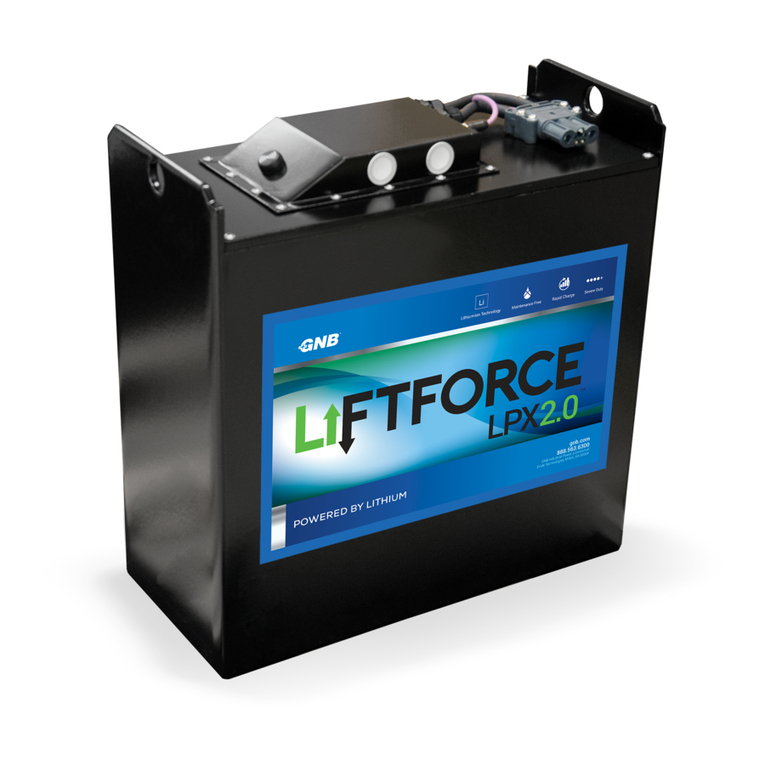
GNB
GNB Liftforce LPX 2.0 User manual
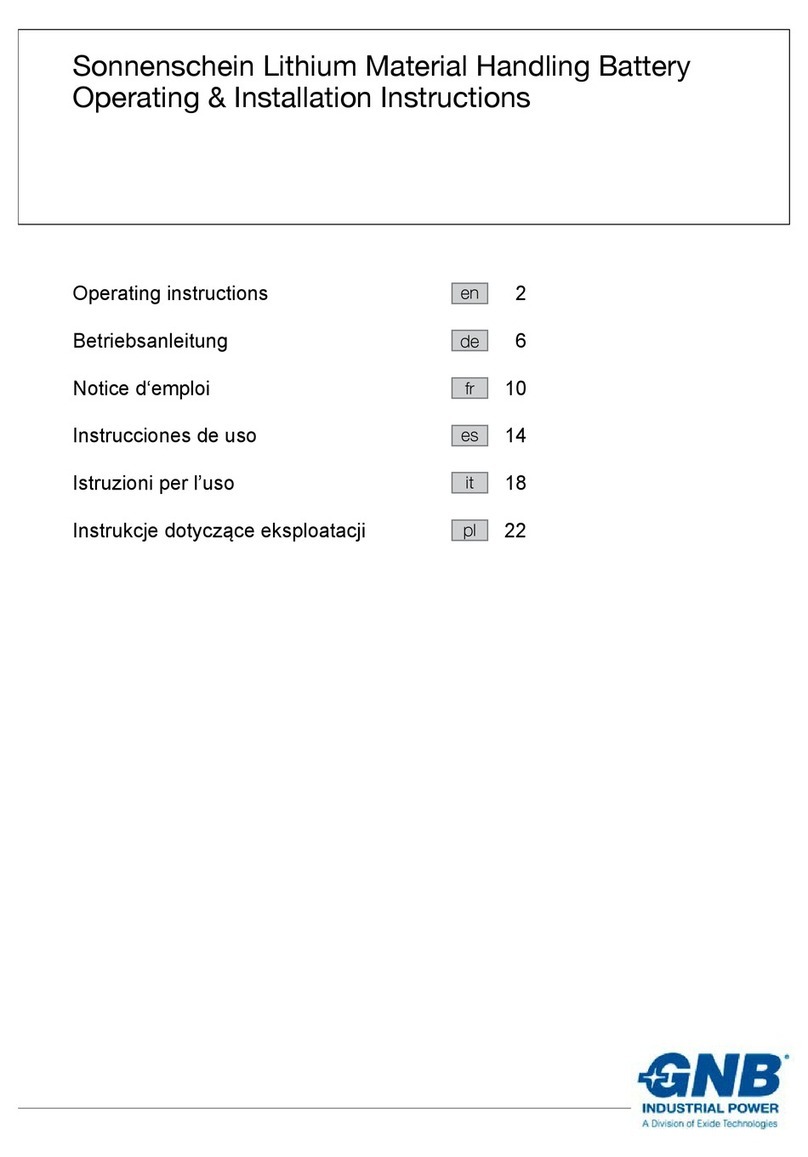
GNB
GNB Sonnenschein Product guide
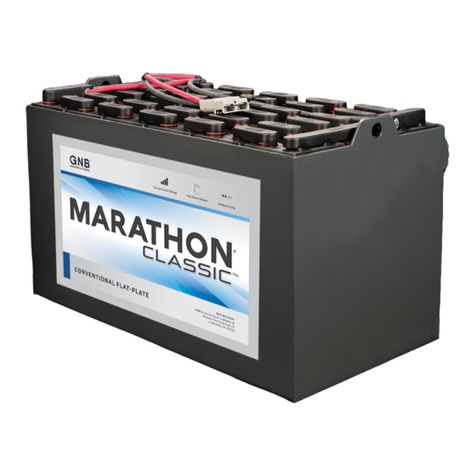
GNB
GNB Marathon Classic User manual
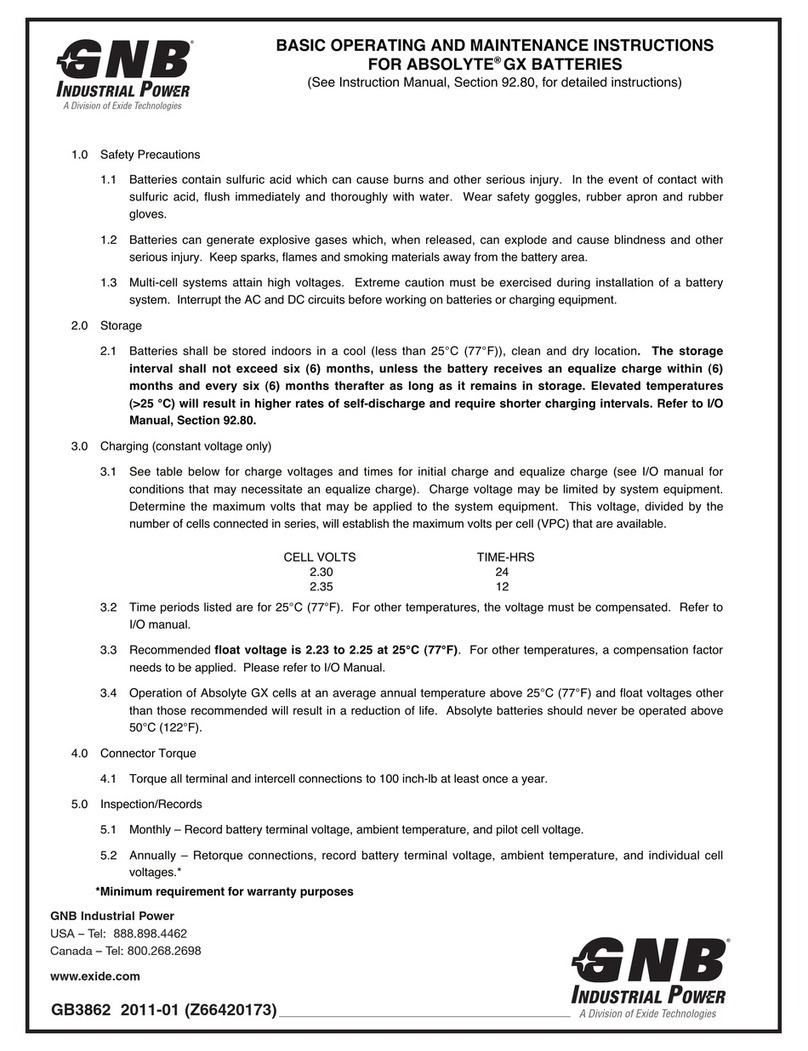
GNB
GNB GB3862 Manual

GNB
GNB Absolyte series Manual

GNB
GNB TUBULAR-LMX User manual

GNB
GNB LiftForce User manual

GNB
GNB 93.10G User manual
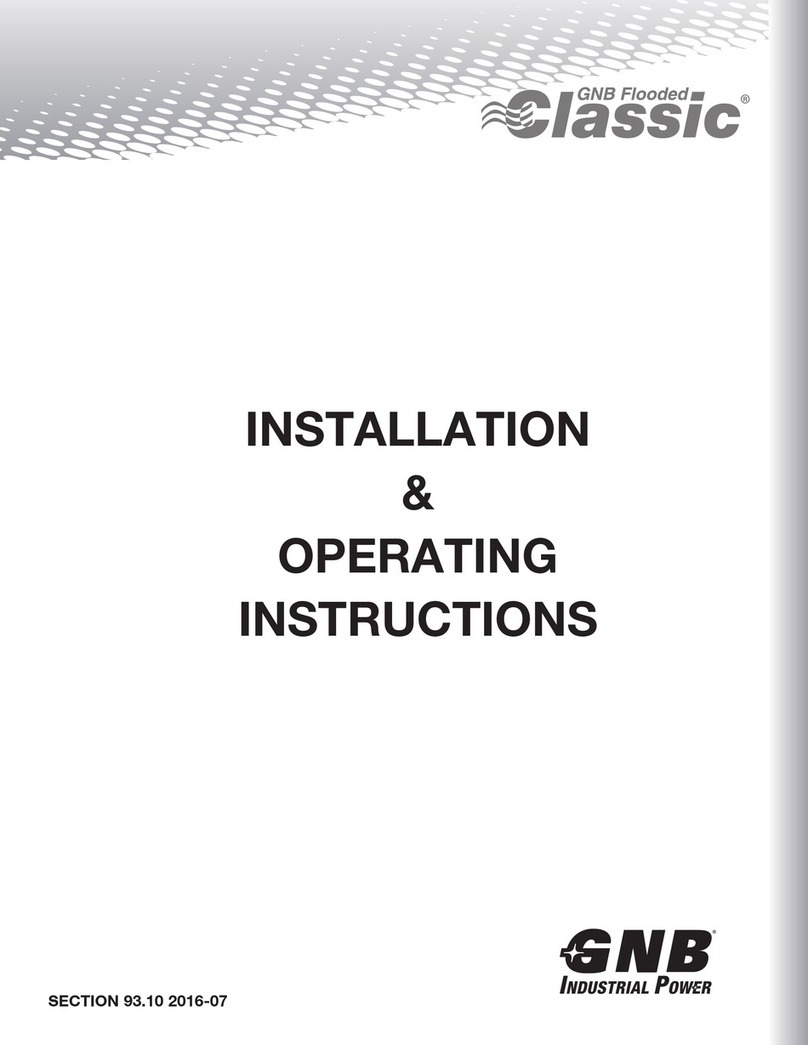
GNB
GNB Flooded Classic series Manual
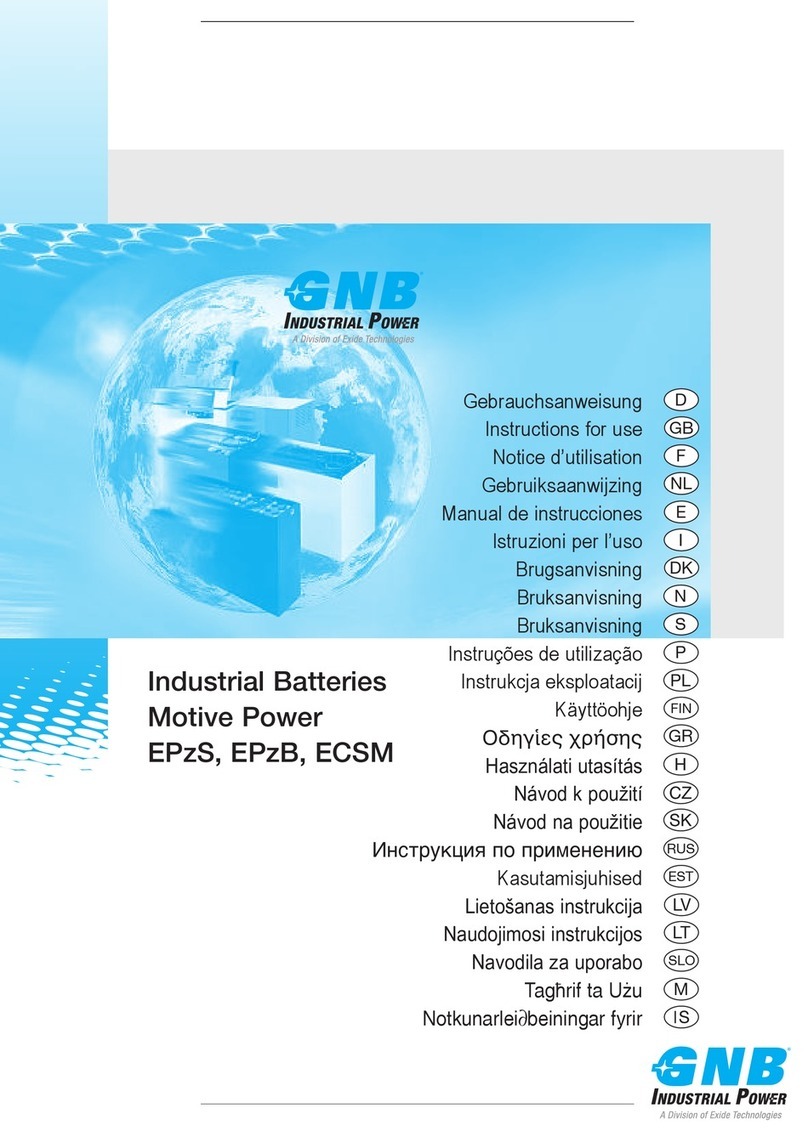
GNB
GNB EPzS Series User manual

